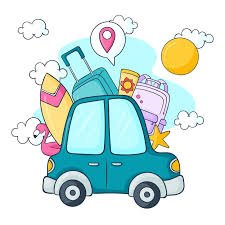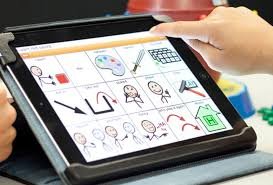
Play Your Way to Kindergarten Success:
Good news: Getting your child ready for kindergarten doesn’t have to feel like “schoolwork.” In fact, play-based learning is one of the best ways to boost speech and language skills — and kids learn best when they’re having fun!

Navigating Kindergarten Communication:
Beginning kindergarten is a significant milestone for children and parents, marking the start of formal education and a new chapter in social development. Essential for a child's success in this new environment are their communication skills. A common question parents have is, "What should a child be able to say and understand before starting kindergarten?" Key communication milestones for kindergarten readiness and how to nurture these skills at home will be explored.

Summer Sound Hunt:
Looking for a way to sneak in speech and language practice while soaking up the summer sun? Try a Summer Sound Hunt — a fun, active scavenger game that helps your child build phonological awareness, speech sound production, and vocabulary on the go!

Understanding Stuttering
It can be alarming to hear your child start to stutter—especially if it seems to appear suddenly. But did you know that stuttering can actually be a normal part of early speech and language development? Many young children go through a phase of disfluency (trouble with the smooth flow of speech), and in most cases, it’s temporary and developmentally appropriate.
Let’s take a closer look at when stuttering is considered typical—and when it might be a sign to consult a speech-language pathologist.


Road Trip Talk-
Long car rides can sometimes feel endless, especially for kids (and adults!) who get restless after a while. But with the right language games, you can turn your road trip into a lively, interactive adventure that boosts communication skills, sparks creativity, and keeps everyone entertained.
Here are some of our favorite language games to play in the car—no materials needed, just your imagination and your voices!

Client Spotlight: Charlotte’s Journey in Speech Therapy
Katie made it a priority to keep communication clear and consistent, providing regular updates and personalized notes about Charlotte’s progress. “We always received a note and report update describing what they worked on,” Hannah said. “We also got calls about what they were focusing on and how she was improving.”

Speech Sounds by Age
As children grow and develop their speech, certain sounds emerge at expected ages. It’s perfectly normal for kids to make some errors as they learn to talk—but knowing what’s typical (and what’s not) can help parents support their child’s speech development and know when it might be time to check in with a speech-language pathologist.

Speech & Language Milestones:
As a parent, it’s natural to wonder whether your child’s communication skills are developing as they should. While all children develop at their own pace, there are key milestones most kids reach within certain age ranges. Knowing what to expect—and when to seek support—can make a big difference in your child’s communication growth.

Summer Reading List for Language Growth (By Age Group)
Summer is the perfect time to slow down, cuddle up with a good book, and build your child’s speech and language skills without it feeling like work. Whether you’re reading together at bedtime, in a backyard hammock, or during a long road trip, books offer powerful opportunities for vocabulary development, comprehension, and communication.
Here’s a curated list of age-appropriate summer reads—plus tips on how to use each book to boost language at home!

The Power of Collaboration:
In today’s inclusive classrooms, collaboration among professionals is more important than ever. One of the most valuable partnerships a teacher can build is with a Speech-Language Pathologist (SLP). SLPs bring specialized knowledge in communication development that can support not only students with speech and language challenges, but also enhance learning for all students. When educators and SLPs work together, the impact is powerful.

10 Easy Ways to Boost Your Child’s Language at Home
Looking to support your child’s language development? Discover 10 simple, effective strategies recommended by pediatric speech therapists to help kids talk, understand, and connect.

Helping Your Child with Trouble Following Directions
Have you ever asked your child to “go get your shoes,” only to find them playing with blocks five minutes later?
If so, you’re not alone. Following directions is a skill that develops over time—but for some children, it can be especially challenging. Understanding why your child may struggle, and how to help, can make a big difference in their daily life and success in school.

A Quick and Easy Springtime Sensory Bin for Littles
Through the use of sensory bins in speech and language therapy, kids can learn the:
Ability to follow directions. When pairing a book with a sensory bin, an SLP can ask the child to follow directions by looking for a character or other item within.
Understanding size concepts
Finding things that are the same or different
Understanding quantitative concepts- the most or the least amounts of something
Understanding qualitative Concepts- which items have various features like spots, bumps, or smooth

Speech and language disorders
Through therapy sessions with As We Speak therapists, they can evaluate your child and meet them where they are. They can determine if a certain combination of therapies can create improvement and progress. Some children may have symptoms of one disorder, but another is keeping them from being able to progress.
Every child is different- you’ve heard that time and time again.

A Shallow Dive into Language-Based Disabilities and Their Impact on Communication Skills
As we start to learn the aspects of speech and language, the other pieces of communication come into play. If it’s determined that a child has a language-based disability (LLD), the interventions and approach to teaching [and learning] about grammar and sentence organization can help improve their growth in these areas.

Coos, babbles, & words
In this article, we will dig into the differences between coos and babbles, and how they are connected to words themselves. We’ll also discuss what to do if you think your baby isn’t quite hitting the typical age milestones when it comes to each, and how to help them along the way.

Speech vs. Language
Understanding the difference between speech and language and why it matters.

Early Intervention in Speech Therapy-
POV: Your baby mutters out a few sounds and you convince yourself-and everyone around you- that he totally said “mama”… just me? I’d bet not.

STEP-BY-STEP GUIDE TO ENHANCING LITERACY SKILLS THROUGH SPEECH THERAPY
“Another thing we believe is that every child grows at their own pace. It’s vital to meet them where they are and create a personalized plan to help them learn the skills they need in particular.”
